The wild plant Vervain (Verbena Officials) is so steeped in folklore, magic, and ancient religions, and there are so many legends attached to it with so many ancient medicinal uses as well that, like Mandrake, you could pretty much write a book on Vervain alone.
Pliny the Elder (23-79AD) stated that it was the most sacred herb of all. Other peoples throughout Europe, including the druids, among many others, agreed, and it is known by names like Holy Wort, Divine Weed, Enchanter’s Weed, Herb of Grace, Sacred Herb and Herbe Veneris.
Long before Pliny was born, the Gauls in France (500-100BC) had quite a few uses for it, amongst which were predicting the future, driving out evil spirits, creating friendships, reducing fevers and curing numerous other ailments. But note: it would only be effective if you harvested it at the right time, which would be on a day without sunshine, when there was a new moon, and when the dog star, Sirius, was rising. Then you had to offer wax and honey to the earth and draw a circle around the Vervain plant with an iron implement of your choice. When you were finally ready to pull out the plant - not easy, as it has very tough stems (in Holland it is called ‘IJzerhard’, meaning hard as iron) - you were only to use your left hand and never to let it touch the ground. But if you did it right, it was well worth the effort: you could cure almost anything, from the plague to loosing your hair.
German bishop and discoverer of arsenic, Albertus Magnus (c.1200-1280) and Flemish Botanist Rembert Dodoens (1515-1587) both claimed that you could cure headaches by wearing a crown made of Vervain - as long as you picked it before sunrise. A handy side effect being that it would also help to get rid of nits.
Even better, you could use it for love potions. Different types of Vervain grow all over the world and it was commonly used for obtaining the love of the one you adored in Europe, Africa and the Southern States of the US. It was still used for love spells and potions well into the 20th century.
But the love potion methods used were not always easy. One of the more complicated methods involved you first needing to gather precisely seven stalks of Vervain. Then, and I’m not sure how you’re going to manage this one, you needed to gather seven threads from a garment your beloved one is wearing (preferably their shirt or blouse) without them noticing. Then you would tie the stalks together with those seven threads and, here’s your next challenge, put the bundle secretly under their pillow at night. If you achieved all this, from the next morning onwards, they would love you forever. Job done.
A simpler method, though a bit of a gamble, involved rubbing Vervain into the palms of your hands at sunset: the next person who you shook hands with, would fall in love with you instantly. All very well if you managed to corner your love target first but the consequences might not be ideal if a less-desirable suitor got to you first.
Albertus Magnus felt Vervain’s love powers were so potent you only had to wear it - anywhere on your body - and anyone, seeing it, would fall in lust with you. Handy. But bear in mind this was the same man who suggested you paint your face with bat’s blood in order to see in the dark.
Various authorities of their time, including Pliny the Elder, Greek pharmacist Dioscorides (c.40-90) and, 1,500 years later, Rembert Dodoens all wrote that a ‘tea’ made from soaking Vervain in water and sprinkled on the floor of your home would make any guest feel jolly. Cheaper than cracking a bottle. And John Gerard (1545-1612) felt you didn’t even have to brew tea, just throw some Vervain around the place and everyone would feel happy and at home.
One common use in the middle ages was as a remedy for kidney stones and that’s where we find the origin of the name Vervaine. It is suggested it comes from the Celtic word ‘ferfaen’. ‘Fer’ meaning to drive away and ‘faen’ stone.
And there are numerous other uses for Vervain, from conjuring up devils to driving away your enemies and witches, to protecting you on journeys (when worn in a shoe or sown into your clothes) to soothing teething babies; from predicting whether someone would live or die to getting rid of snakes, curing bites from venomous beasts, and just for all round good luck.
With its immense array of powers, it comes as no surprise that the scientific word ‘Verbana’ can be traced all the way back to the PIE word “werbh" meaning 'to turn or bend’ and relates to the movements one would make with a magic wand or sceptre.
‘Officinalis’ means ‘from the store room’: clearly a plant you should always keep in the medicine cupboard.
Other names for Vervain are: Berbine, Herb of the Cross, Juno’s Herb, Juno’s Tears (Juno was the Roman Goddess of Love, Marriage and Childbirth), Mercury’s Moist Blood, Simpler’s Joy and last but not least Pigeon Grass, as the smell from its roots was said to attract pigeons.
In other languages you will also find references to the sacred or magical status the plant had with many ancients (and pigeons’ love for Vervain). In French we have: ‘Herbe aux Enchantements’, “Herbe aux Sorcierers’, ‘Herbe de Sang’ and ‘Herbe Sacree’ (Enchanters’, Sorcerer’s, Blood and Holy herb).
In German, Eisenkraut (iron herb), Altar Blume (Alter flower), Junotranen (Juno’s Tears), Katzenblut (cat’s blood) Geweihet Kraut or Heiliges Kraut (both meaning Sacred Herb) and Taubenlieb (Pigeon’s love). Dutch: Duivengras (Pigeon Grass), ‘Kerckkruyd’ (Church herb) and ‘Duivelkruid’ (Devil herb).
If you enjoyed reading this, you might enjoy reading about other wildflowers too. You can easily find all posts written so far in the Flowerology alphabetical archive . If you’d like to know more about the background of Flowerology and Chantal, you can read more in the about page.
This newsletter is NOT a field guide for flower identification. It’s often difficult to tell the difference between harmless plants and poisonous plants and some flowers are rare and protected by law, so, NEVER pick or use any plants or flowers if you’re not sure about them.
illustrations and text ©Chantal Bourgonje


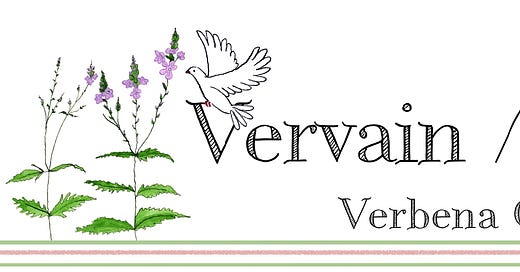




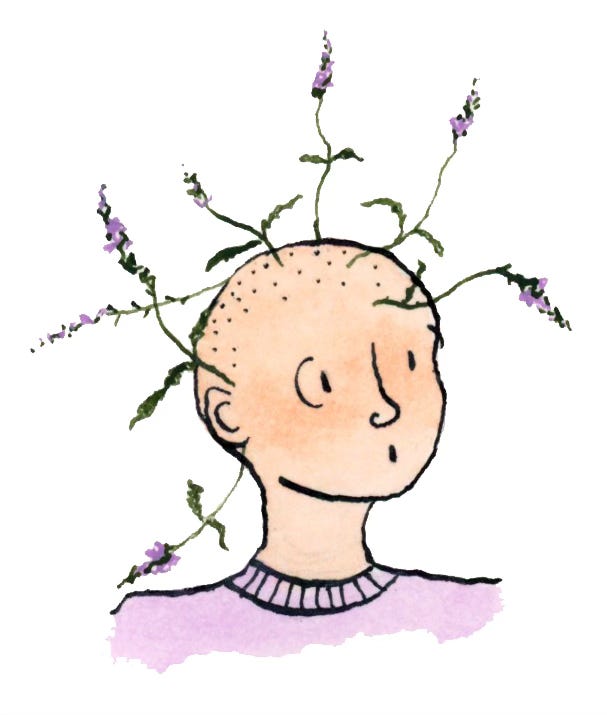



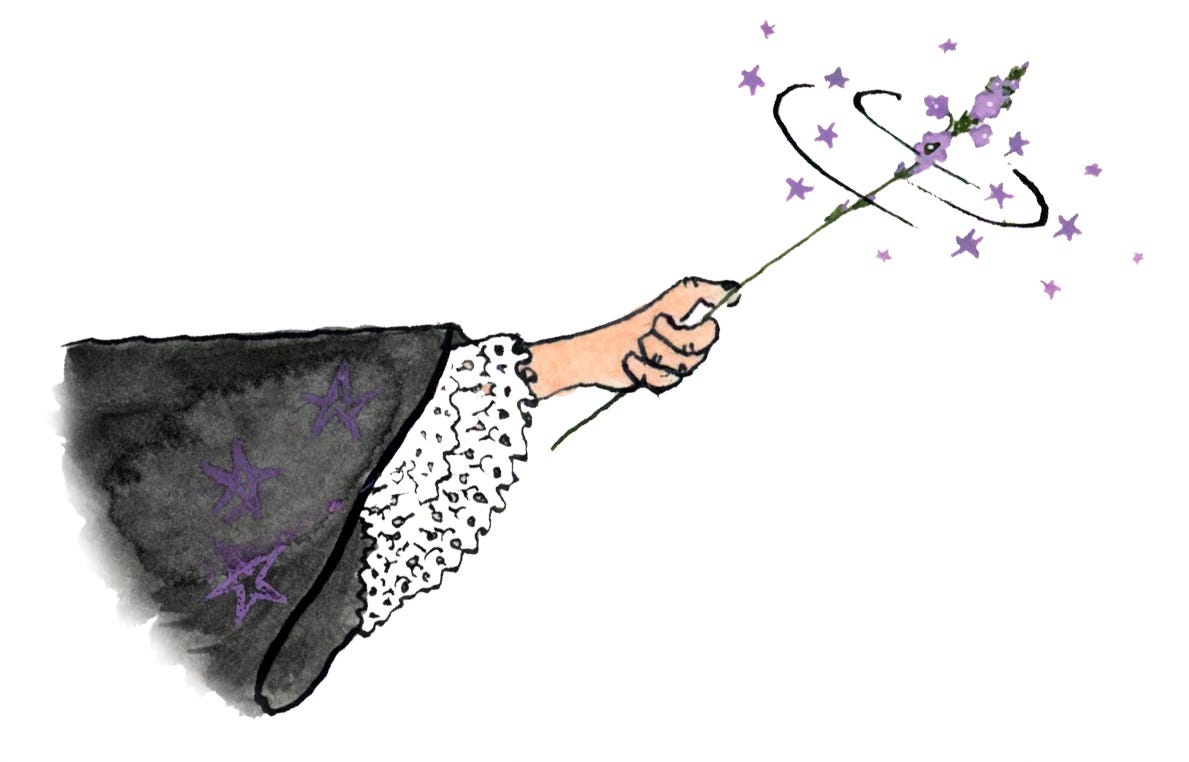
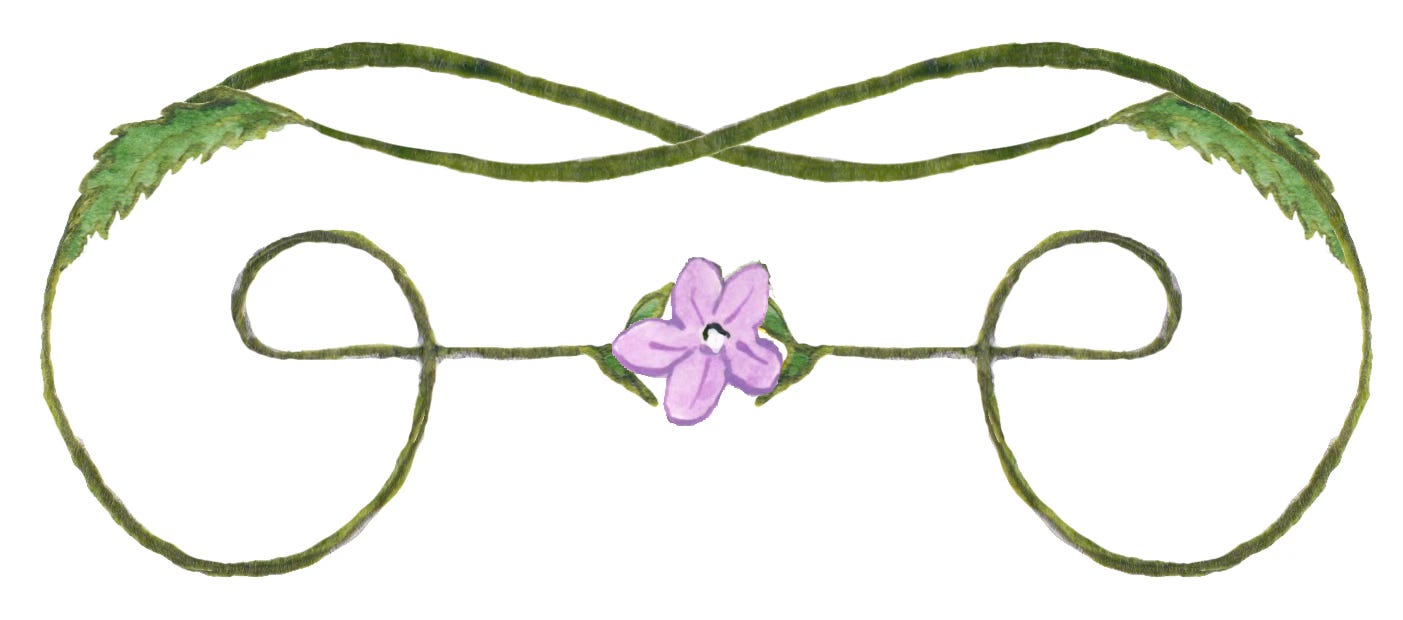
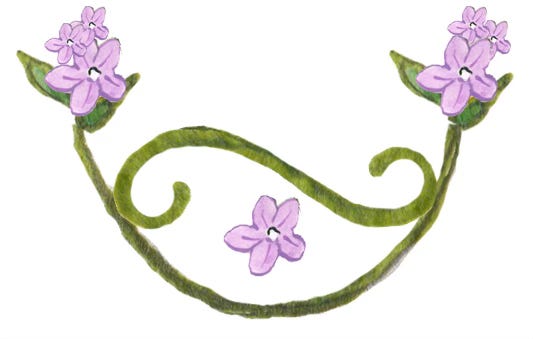
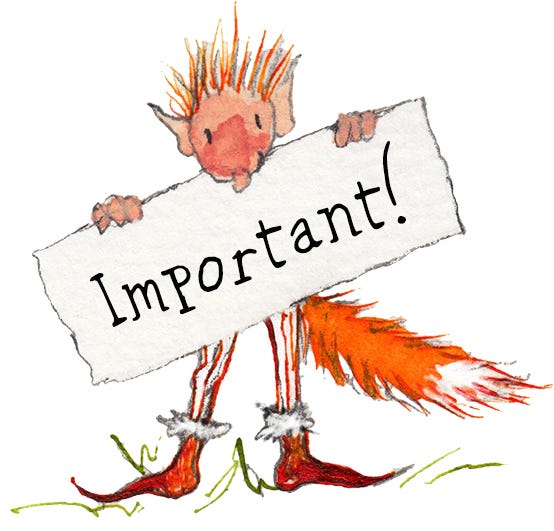
Wow! What a herb 😁! I wonder why some plants become such a focus for folklore and magical beliefs? This stuff is never-ending-interesting...